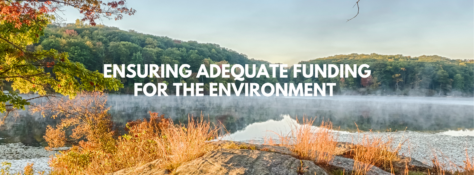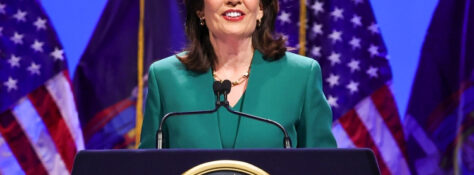NYLCV Policy Director Pat McClellan testified before the Environmental Conservation and Energy Committees about the need to advance cap-and-invest and fund clean water and the Environmental Protection Fund, among other priorities.
Learn MoreThe New York League of Conservation Voters (NYLCV) today released its 2024 NYC Council Environmental Scorecard, in which Council Members and the body as a whole are evaluated based on their support of environmental bills in the previous year and whether those bills passed.
Learn MoreAs a member of New Yorkers for Clean Water and Jobs – a broad coalition of conservation, environmental justice, labor, business, local government, outdoor recreation and public health groups – we are requesting that lawmakers advance the following budget items: Appropriate at least $500 million for the Environmental Protection Fund, $600 million for the Clean Water Infrastructure Act; at least $200 million in capital funding for the New York State Parks; and at least $100 million in capital funds for the New York State Department of Environmental Conservation (DEC); in a timely fashion, utilize the billions still available under New York’s $4.2 billion Clean Water, Clean Air and Green Jobs Environmental Bond Act to help all New Yorkers, including those living in disadvantaged communities; appropriate funds so that the DEC can hire approximately 225 new full-time employees; and appropriate funds so that the New York State Department of Health (DOH) can hire additional staff to effectively implement and monitor new clean water standards.
Learn MoreOur position at the New York League of Conservation Voters (NYLCV) is that nothing is more important than the health of our children.
That’s why the NYLCV has signed on to the proposal called the Coalition for Healthier Schools. The coalition, established by our long-time partner, the Health Schools Network, based in Saratoga Springs, NY, sets forth federal and state goals for making our nation’s schools healthier for students and staff.
The numbers show us how much is at stake. Every school day, 55 million children and seven million adults - about 20 percent of the American population - attend one of the 130,000 public or private schools somewhere in our country.
Learn MoreWhile the $1 billion in infrastructure investments Governor Hochul announced last week will help address critical needs, it falls far
Learn MoreOn Sunday, January 5, New York City took a monumental step toward a cleaner, greener, and more efficient future with the official start of congestion pricing. For the first time, drivers entering the heart of Manhattan—south of 60th Street—will pay a toll, with most vehicles charged $9 during peak hours. This historic change has been years in the making and marks a turning point in the city’s efforts to tackle gridlock, air pollution, and underfunded public transit.
Learn MoreIn 2024, despite setbacks in the November election, the fight for a cleaner, healthier future gained significant momentum across the
Learn MoreThe New York City Council has adopted a modified version of the City of Yes for Housing Opportunity proposal, a critical step toward addressing the city’s housing crisis while incorporating sustainability and infrastructure improvements. The revised plan includes significant zoning reforms, new affordability measures, and a $5 billion investment in housing and infrastructure—a victory for advocates of balanced and equitable development.
New York City is facing its worst housing shortage in decades. The City of Yes aims to address this crisis by updating outdated zoning laws to allow more housing across neighborhoods, projecting the creation of 80,000 new homes over 15 years.
Learn More




